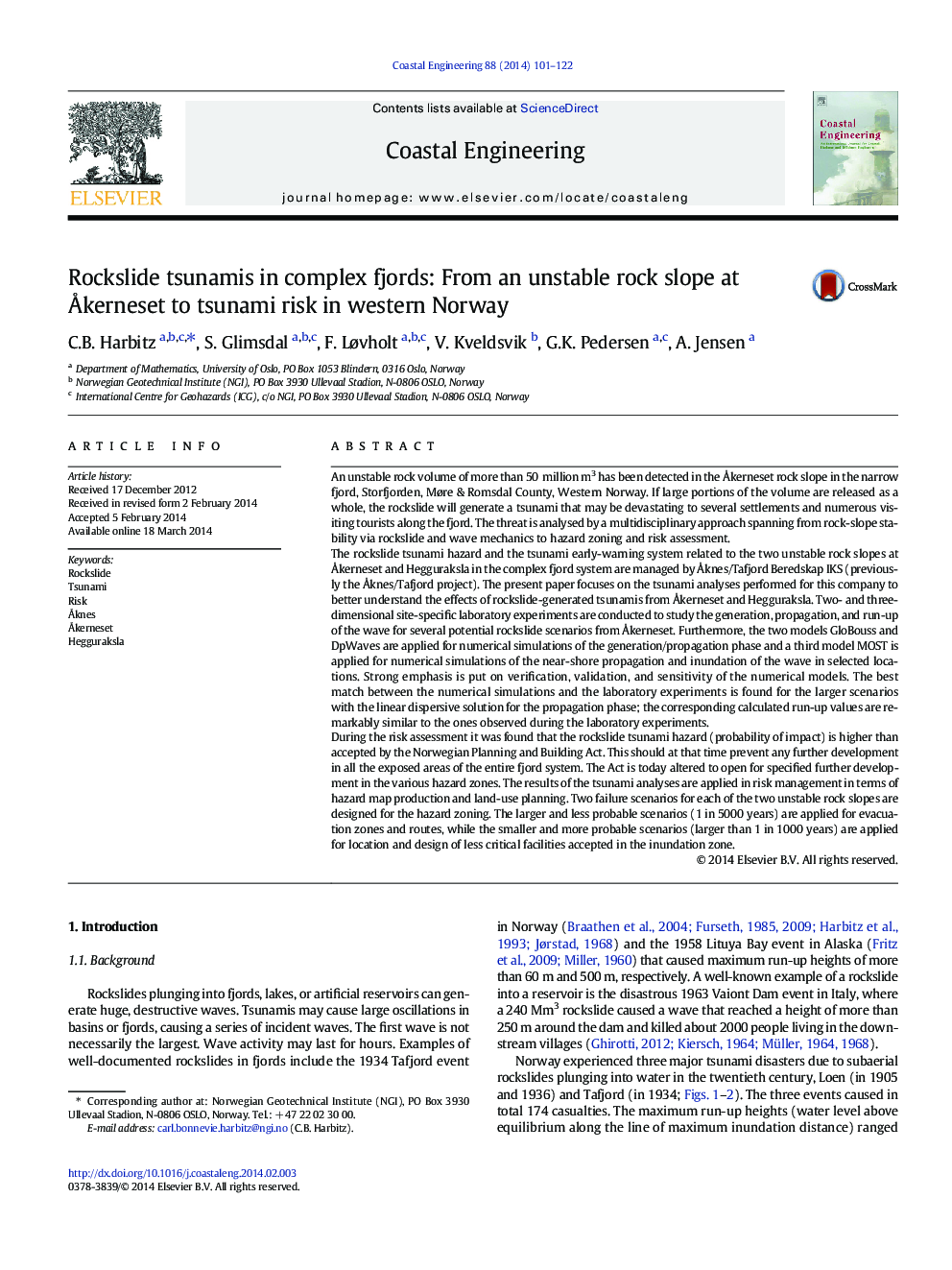| Article ID | Journal | Published Year | Pages | File Type |
|---|---|---|---|---|
| 1720773 | Coastal Engineering | 2014 | 22 Pages |
•Two huge unstable rock volumes are detected along a narrow fjord in Western Norway.•Site-specific physical and numerical modelling of rockslide tsunamis is performed.•Remarkably good match between the two approaches is found for the larger scenarios.•The Åknes/Tafjord project for tsunami-risk mitigation is presented.•The tsunami risk is managed by land-use planning, hazard maps, and warning-systems.
An unstable rock volume of more than 50 million m3 has been detected in the Åkerneset rock slope in the narrow fjord, Storfjorden, Møre & Romsdal County, Western Norway. If large portions of the volume are released as a whole, the rockslide will generate a tsunami that may be devastating to several settlements and numerous visiting tourists along the fjord. The threat is analysed by a multidisciplinary approach spanning from rock-slope stability via rockslide and wave mechanics to hazard zoning and risk assessment.The rockslide tsunami hazard and the tsunami early-warning system related to the two unstable rock slopes at Åkerneset and Hegguraksla in the complex fjord system are managed by Åknes/Tafjord Beredskap IKS (previously the Åknes/Tafjord project). The present paper focuses on the tsunami analyses performed for this company to better understand the effects of rockslide-generated tsunamis from Åkerneset and Hegguraksla. Two- and three-dimensional site-specific laboratory experiments are conducted to study the generation, propagation, and run-up of the wave for several potential rockslide scenarios from Åkerneset. Furthermore, the two models GloBouss and DpWaves are applied for numerical simulations of the generation/propagation phase and a third model MOST is applied for numerical simulations of the near-shore propagation and inundation of the wave in selected locations. Strong emphasis is put on verification, validation, and sensitivity of the numerical models. The best match between the numerical simulations and the laboratory experiments is found for the larger scenarios with the linear dispersive solution for the propagation phase; the corresponding calculated run-up values are remarkably similar to the ones observed during the laboratory experiments.During the risk assessment it was found that the rockslide tsunami hazard (probability of impact) is higher than accepted by the Norwegian Planning and Building Act. This should at that time prevent any further development in all the exposed areas of the entire fjord system. The Act is today altered to open for specified further development in the various hazard zones. The results of the tsunami analyses are applied in risk management in terms of hazard map production and land-use planning. Two failure scenarios for each of the two unstable rock slopes are designed for the hazard zoning. The larger and less probable scenarios (1 in 5000 years) are applied for evacuation zones and routes, while the smaller and more probable scenarios (larger than 1 in 1000 years) are applied for location and design of less critical facilities accepted in the inundation zone.
